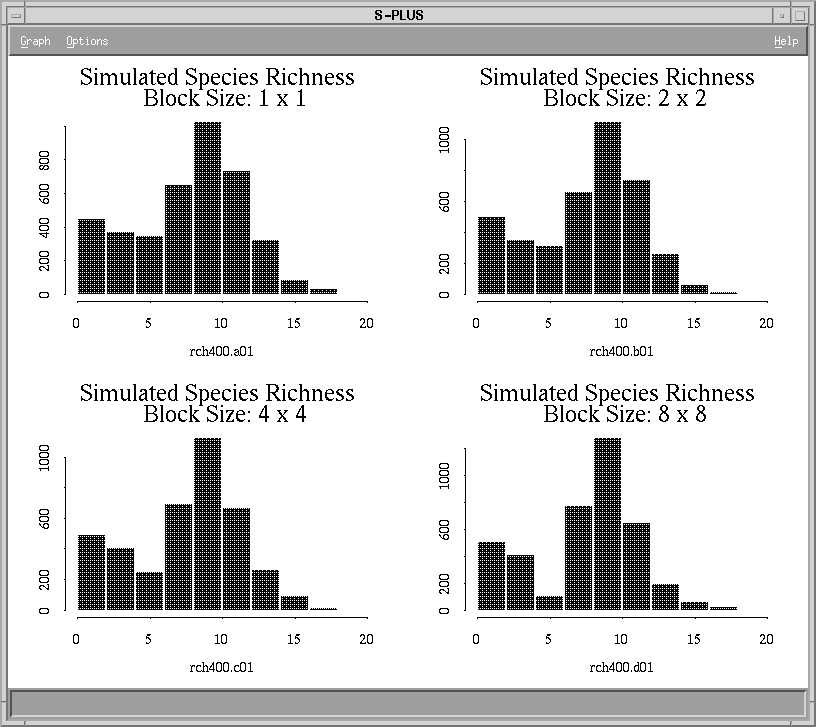This research was conducted by Dr. George Malanson, and
Dr. Marc Armstrong, Department of Geography, University of Iowa, through a funding from
U.S. Department of Energy, National Institute for Global Environmental Change.Abstract:Spatial scaling affects the response of computer simulations of vegetation to fragmentation, barriers, and corridors in the landscape during periods of climatic change. We used a computer simulation model of the dynamic processes of dispersal, establishment, growth, and death of forest trees in a spatially explicit framework to show that the spatial configuration of landscapes controls their reproduction. Three general factors that affect forest dynamics and structure were studied: climatic range, dispersal abilities, and spatial structure. In this research, we implemented a multi-cell simulation in which we systematically altered the distance between cells and areas represented by each cell in order to elucidate the problems of scaling spatial pattern and process in simulations. The objective of this research was to investigate the consequences of changing the spatial scale of representation of a multi-cell grid model from the landscape to the regional level. A more detailed, formal overview of the outcome of this project is now available at Great Plains Regional Center Progress Reports page. Researcher:
Research Assistant:
(c) Copyright 1996-2006 M. Sayeeduzzaman |
